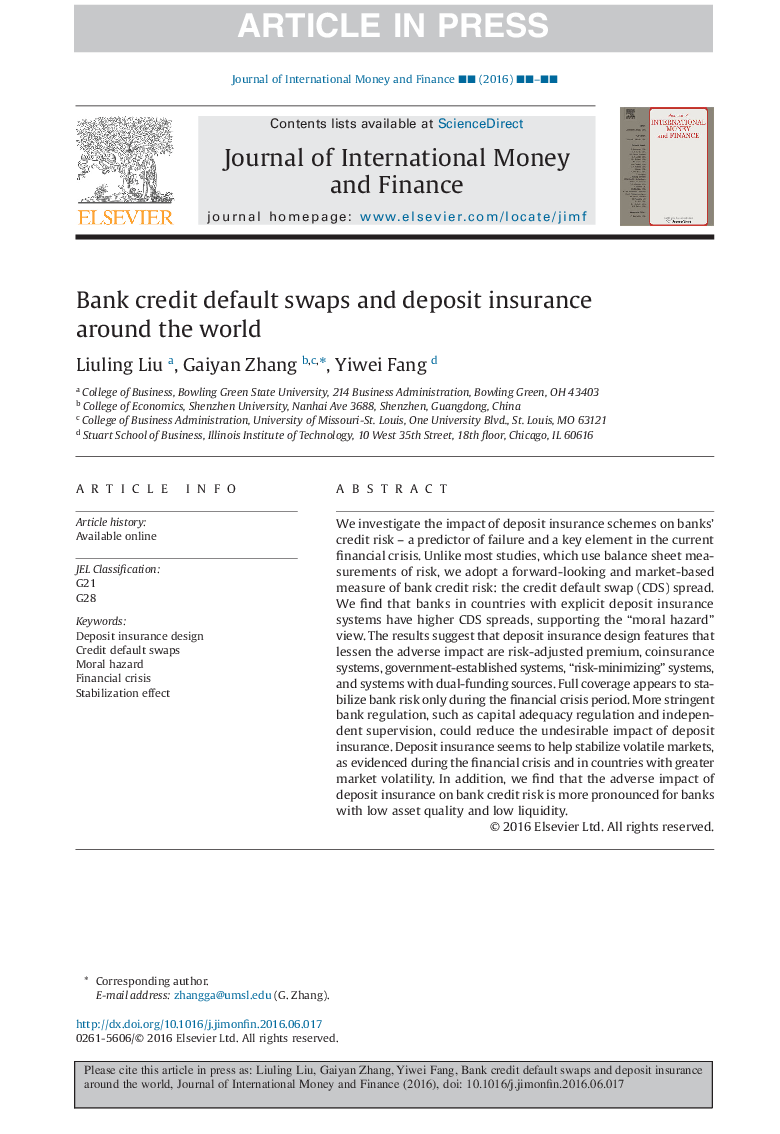| Article ID | Journal | Published Year | Pages | File Type |
|---|---|---|---|---|
| 5101221 | Journal of International Money and Finance | 2016 | 25 Pages |
Abstract
We investigate the impact of deposit insurance schemes on banks' credit risk - a predictor of failure and a key element in the current financial crisis. Unlike most studies, which use balance sheet measurements of risk, we adopt a forward-looking and market-based measure of bank credit risk: the credit default swap (CDS) spread. We find that banks in countries with explicit deposit insurance systems have higher CDS spreads, supporting the “moral hazard” view. The results suggest that deposit insurance design features that lessen the adverse impact are risk-adjusted premium, coinsurance systems, government-established systems, “risk-minimizing” systems, and systems with dual-funding sources. Full coverage appears to stabilize bank risk only during the financial crisis period. More stringent bank regulation, such as capital adequacy regulation and independent supervision, could reduce the undesirable impact of deposit insurance. Deposit insurance seems to help stabilize volatile markets, as evidenced during the financial crisis and in countries with greater market volatility. In addition, we find that the adverse impact of deposit insurance on bank credit risk is more pronounced for banks with low asset quality and low liquidity.
Related Topics
Social Sciences and Humanities
Economics, Econometrics and Finance
Economics and Econometrics
Authors
Liuling Liu, Gaiyan Zhang, Yiwei Fang,
